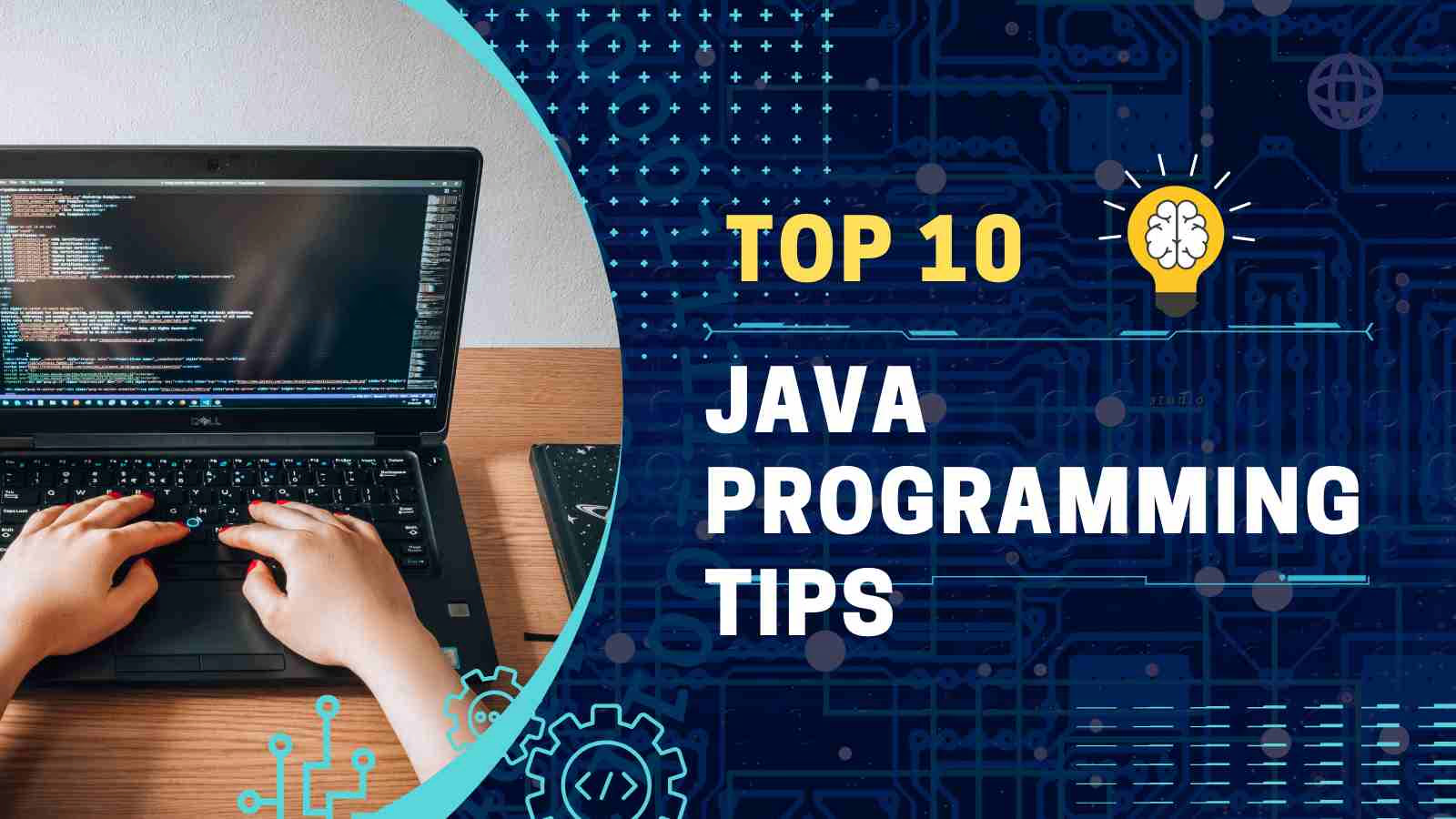Table of Contents
ToggleIntroduction
Java has been a stalwart in the programming landscape for decades. With its platform independence and robust ecosystem, it continues to be the language of choice for developers across the globe. But to truly excel in Java development, it’s not just about knowing the syntax—it’s about mastering the best practices that can make your code more efficient, readable, and maintainable. In this article, we’ll explore ten essential Java tips and tricks that every developer should know to elevate their skills and build better applications.
Tip 1: Understand the Basics Thoroughly
Before diving into advanced topics, it’s crucial to have a solid grasp of Java’s core concepts. Mastering the basics sets the foundation for everything you do in Java development.
Mastering Core Concepts
Data Types and Variables
Start with understanding data types and variables. Knowing when to use primitive data types like int, char, and boolean, and when to use objects like String and ArrayList, can help you write more efficient code.
Loops and Conditional Statements
Familiarize yourself with loops and conditional statements—these are the building blocks of logic in your programs. Knowing how to use for, while, and do-while loops, as well as if-else statements, is essential for controlling the flow of your applications.
Tip 2: Use the Right Tools
The tools you choose can significantly impact your productivity and the quality of your code. Java offers a wide range of tools, from Integrated Development Environments (IDEs) to building automation systems.
Integrated Development Environments (IDEs)
The right IDE can make all the difference in your coding experience. Some popular choices include Eclipse, IntelliJ IDEA, and NetBeans. Each has its strengths—Eclipse is highly customizable, IntelliJ IDEA offers smart coding assistance, and NetBeans provides excellent support for Java EE development. Pick the one that aligns with your project needs and workflow.
Build Tools like Maven and Gradle
For managing project dependencies and automating builds, tools like Maven and Gradle are indispensable. Maven is more declarative, using XML configuration files, while Gradle offers more flexibility with its Groovy-based configuration. Both tools streamline the build process, making it easier to manage complex projects.
Tip 3: Write Clean and Readable Code
Clean code is not optional—it’s essential for sustainable development. Writing code that is easy to read and understand is crucial for collaboration and maintenance.
Follow Naming Conventions
Use descriptive names for variables, methods, and classes. A well-named variable like totalPrice is far more understandable than a cryptic one like tp. Stick to the standard Java naming conventions: classes should start with an uppercase letter, methods and variables with lowercase, and constants should be in all uppercase letters with underscores.
Use Comments Wisely
Comments can be helpful, but they should be used sparingly. Instead of writing a comment to explain what a piece of code does, aim to write self-explanatory code. When comments are necessary, make sure they are clear and concise.
Stick to Proper Code Formatting
Consistent formatting makes your code easier to read and maintain. Follow the standard indentation rules, align your brackets, and space your code appropriately. Most IDEs can help with automatic formatting, ensuring that your code adheres to best practices.
Tip 4: Leverage Object-Oriented Programming (OOP) Principles
Java is an object-oriented language, and understanding OOP principles is key to writing efficient and scalable code.
Encapsulation, Inheritance, and Polymorphism
Encapsulation helps you protect the internal state of your objects by using private fields and providing public getters and setters. Inheritance allows you to create a new class based on an existing one, promoting code reuse. Polymorphism lets you define methods in a child class that have the same name as those in the parent class, enabling flexibility and extensibility.
Implementing Design Patterns
Design patterns are like blueprints for solving common coding challenges. Dive into the world of design patterns, starting with Singleton, Factory, and Observer. These patterns can help you write more robust and maintainable code, reducing the likelihood of bugs and errors.
Tip 5: Optimize Your Code for Performance
Performance optimization is critical, especially in large-scale applications. Writing efficient code can save resources and improve user experience.
Efficient Memory Management
Java’s automatic garbage collection is helpful, but it’s not foolproof. Be mindful of how you manage memory in your applications. Avoid unnecessary object creation and ensure that objects are eligible for garbage collection when they’re no longer needed.
Minimizing Garbage Collection
While you can’t control when the garbage collector runs, you can reduce its impact by minimizing the creation of short-lived objects. Use StringBuilder instead of String concatenation in loops, and prefer primitive types over boxed types where possible.
Profiling and Tuning Performance
Use profiling tools like VisualVM or YourKit to analyze your application’s performance. These tools can help you identify bottlenecks and optimize your code accordingly. Tuning performance often involves a trade-off between time complexity and space complexity, so choose your optimizations wisely.
Tip 6: Master Exception Handling
Don’t overlook exception handling—it’s crucial for building reliable Java applications. Properly managing exceptions ensures that your application can handle unexpected situations gracefully.
Importance of Handling Exceptions Properly
Exceptions are bound to occur, but how you handle them can make or break your application. Always anticipate potential issues by using try-catch blocks, and provide meaningful error messages to help with debugging.
Using Try-Catch-Finally Blocks
The try-catch-finally construct allows you to handle exceptions in a structured way. Use try to define the block of code that might throw an exception, catch to handle specific exceptions, and finally to execute code that should run regardless of whether an exception was thrown.
Custom Exceptions
In some cases, you might need to define your own exception classes. Custom exceptions can make your code more readable and help you handle specific error conditions more effectively. Ensure that your custom exceptions extend from Exception or RuntimeException and include meaningful error messages.
Tip 7: Get Comfortable with Java Streams and Lambdas
Java Streams and Lambdas, introduced in Java 8, revolutionized the way we write Java code by enabling a more functional programming style.
Introduction to Java Streams
Streams allow you to process data in a declarative manner. With streams, you can filter, map, and reduce collections of data in a concise and readable way. For example, using stream().filter().map().collect() makes it easy to manipulate data without writing explicit loops.
Functional Programming with Lambdas
ambdas simplify the process of passing behavior as parameters. They allow you to write shorter, more readable code, especially when working with collections. For instance, instead of writing an anonymous inner class for a comparator, you can simply use a lambda expression.
Real-World Use Cases
Streams and lambdas are incredibly powerful in real-world applications. Use them to handle data transformations, filter lists, or perform bulk operations on collections. Their use can lead to cleaner, more maintainable code that’s easier to understand and debug.
Tip 8: Keep Up with Java Updates
Java is constantly evolving, and keeping up with the latest updates is essential for staying competitive in the field.
Understanding New Features in Recent Java Versions
Each new Java release brings a host of new features and improvements. From the introduction of modularity in Java 9 to records and pattern matching in Java 16, staying informed about these changes can help you write better code and take advantage of the latest enhancements.
Migrating Legacy Code to New Versions
Updating legacy code to use the latest Java features can improve performance and maintainability. However, migration requires careful planning and testing. Ensure that your code is backward-compatible and thoroughly test it to avoid introducing new bugs.
Benefits of Staying Updated
By staying current with Java updates, you ensure that your applications benefit from the latest security patches, performance optimizations, and language features. This not only improves the quality of your code but also makes you a more valuable developer in the job market.
Tip 9: Test Your Code Regularly
Testing is a critical part of the development process, ensuring that your code works as expected and catches bugs early.
Importance of Unit Testing
Unit testing allows you to test individual components of your application in isolation. This ensures that each part of your codebase functions correctly, making it easier to identify and fix issues.
Frameworks like JUnit and TestNG
JUnit and TestNG are popular testing frameworks in the Java ecosystem. They provide annotations and assertions that make writing and running tests straightforward. Using these frameworks can help you maintain high code quality and reduce the likelihood of bugs in your applications.
Writing Effective Test Cases
Effective test cases are clear, concise, and cover a variety of scenarios, including edge cases. Ensure that your tests are independent of each other and provide meaningful feedback when they fail. Writing comprehensive test cases can save you time and effort in the long run by catching issues before they make it to production.
Tip 10: Collaborate and Contribute to Open Source
Contributing to open-source projects is an excellent way to improve your skills and give back to the community.
Benefits of Open Source Contribution
Working on open-source projects exposes you to new ideas, coding standards, and collaboration techniques. It’s an excellent opportunity to showcase your skills through a portfolio that will catch the eye of potential employers.
Finding Java Open Source Projects
There are countless open-source projects that welcome contributions, ranging from small libraries to large frameworks. Websites like GitHub and GitLab are excellent places to find projects that align with your interests and skill level.
Learning from Community Feedback
One of the biggest advantages of contributing to open-source is the feedback you receive from the community. This feedback can help you improve your code, learn new techniques, and grow as a developer.
Conclusion
Java is a powerful and versatile language, but becoming proficient in it requires more than just knowing the syntax. By following these ten essential tips, you can write cleaner, more efficient code, improve your performance, and stay ahead in the ever-evolving world of Java development. Remember, the key to mastering Java—or any programming language—is continuous learning and practice. If you want to learn more about Java and Java-related topics, Please go through my Java article page.
FAQs
What is the best IDE for Java development?
There are several excellent IDEs for Java development, including Eclipse, IntelliJ IDEA, and NetBeans. The best one for you depends on your project needs and personal preferences.
How do I improve the performance of my Java applications?
Improving performance involves efficient memory management, minimizing garbage collection, and using profiling tools to identify and optimize bottlenecks.
What are the most important OOP principles in Java?
The key OOP principles in Java include encapsulation, inheritance, and polymorphism. These concepts help you write scalable and maintainable code.
How can I stay updated with the latest Java features?
To stay updated, regularly follow Java’s official documentation, participate in developer communities, and experiment with new features in your projects.
What are the benefits of contributing to open-source Java projects?
Contributing to open-source projects helps you improve your coding skills, collaborate with other developers, and build a portfolio that can attract potential employers.

